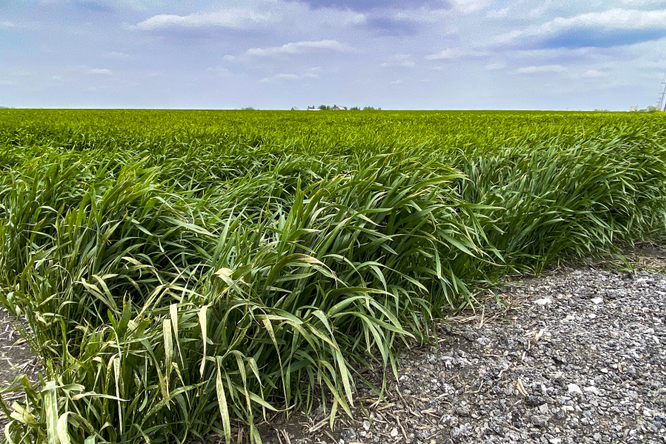Cover crop management: Trade-off between carbon benefits, crop yield

A study led by researchers at the Agroecosystem Sustainability Center (ASC) and the Department of Natural Resources and Environmental Sciences at the University of Illinois Urbana-Champaign quantifies the soil organic carbon (SOC) benefits from cover crops in maize-soybean rotations in Midwestern U.S. agroecosystems.
The study, published in Global Change Biology, used ecosys, an advanced process-based ecosystem model, to assess the impacts of winter cover cropping on SOC accumulation under different environmental and management conditions. By understanding how SOC benefits can be achieved and optimized, farmers and policymakers will be able to enact management practices that support fertile fields that also sequester atmospheric carbon dioxide (CO2) into the soil.
Cover crops have been found to be effective in increasing soil organic carbon by sequestering atmospheric CO2 into the soil, and thus have large potential to mitigate climate change. An accessible method of measuring SOC benefits would help farmers, government agencies, and industries implement climate-smart cover cropping practices. However, an accurate and cost-efficient method of quantifying SOC benefits is still largely unavailable.
To help address this need, the researchers took an ecosystem modeling approach. Their study revealed that growing cover crops can increase SOC by an average of 0.33 megagrams of carbon per hectare per year (which is equivalent to 0.54 tons of atmospheric carbon dioxide per acre per year) in Illinois, and that SOC benefits can be improved through increasing cover crop biomass. The ecosys model not only helps quantify SOC benefits from cover crops, but also improves the scientific understanding of environmental factors that control on SOC benefits, including soil conditions, weather, and cover crop species.
Read more from the Institute for Sustainability, Energy, and Environment.